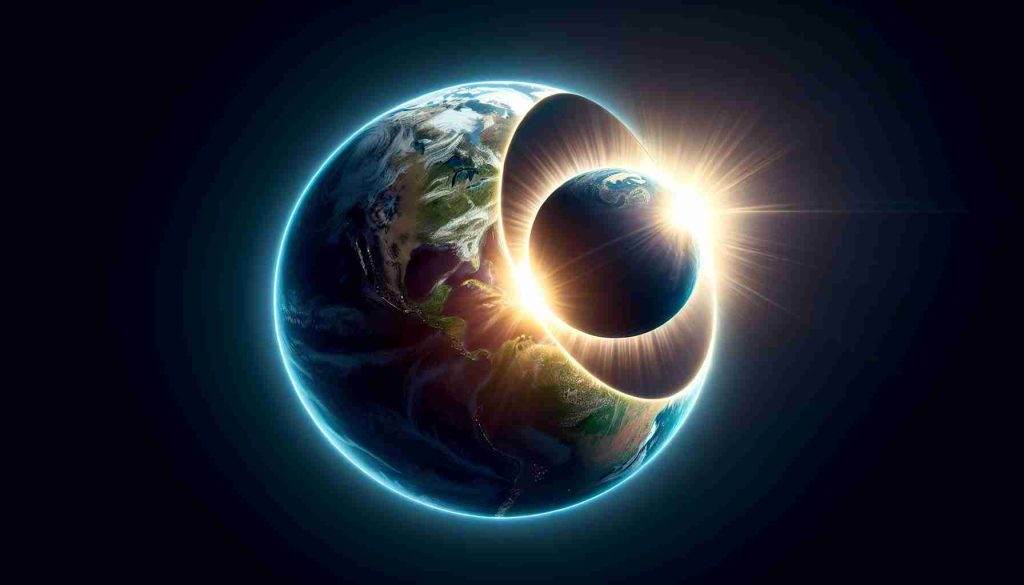Upcoming Solar Eclipse Challenges Flat Earth Beliefs Amidst Scientific Facts

As the United States prepares for the awe-inspiring total solar eclipse on April 8, with millions expected to observe the astronomical spectacle, some flat Earth conspiracy theories have resurfaced. Despite the anticipated thrill of the eclipse and the rush for protective glasses and accommodations, these theories continue to cast unwarranted doubt on well-established scientific principles regarding the shape and movement of the Earth.
A comprehensive review conducted by the USA TODAY Fact-Check Team has vigorously discredited several flat Earth claims. These claims range from the notion that NASA has acknowledged a flat, stationary Earth to the idea that an ice wall encircles a flat planet, assertions that were rated as unequivocally false. NASA, supported by a multitude of independent companies and scientific evidence, states that the Earth is an oblate spheroid.
Further addressing misconceptions, experts explained that celestial navigation would be impossible under flat Earth assumptions. They clarified that operative navigation systems, including radar, take the curvature of the globe into account. Additionally, the visibility of the moon during daylight is not evidence for a flat Earth, but rather a reflection of celestial dynamics.
Operation Highjump, a Navy endeavor intended to establish an Antarctic research base, has been erroneously linked to investigations of a mythical ice wall, which has also been debunked through historical and scientific documentation.
The USA TODAY Fact-Check Team emphasizes its nonpartisan and transparent approach to fact-checking, illustrating a commitment to counter misinformation. Although unconventional theories about the planet’s form persist, scientific consensus upholds the Earth as a rotating globe, a truth further illuminated by the cosmic dance set to captivate viewers during the upcoming eclipse.
Summary: The USA TODAY Fact-Check Team has systematically refuted a series of flat Earth conspiracy theories, reinforcing the Earth’s spherical shape as established by science, especially in light of the total solar eclipse on April 8, which highlights the celestial mechanics of our planet.
The Science and Spectacle of Total Solar Eclipses
As excitement builds for the total solar eclipse scheduled for April 8, it is not just a breathtaking event; it also serves as a stark reminder of the profound scientific knowledge humanity has accumulated regarding celestial phenomena. Total solar eclipses occur when the moon’s orbit aligns precisely to cover the sun, casting a shadow on Earth and temporarily bringing daytime darkness to specific regions. This astronomical event continues to be a focus for scientific study and public interest.
Flat Earth Theories: A Resurgence in the Age of Information
Amidst the marvels of such scientific events, there is an ironic resurgence of flat Earth theories that directly contradict the empirical evidence of our planet’s shape. A dedicated segment of conspiracy theorists rejects the spheroid model of Earth despite overwhelming scientific consensus and proof. Such beliefs are not a newfound phenomenon; they have persisted through history, but today’s digital communications platforms have given them an amplified voice.
The Global Impact of Space-Related Industries
Behind the anticipation for the eclipse lies the space industry’s growth, involving space travel, satellite communications, and educational efforts surrounding astronomy. As technology progresses, the market forecasts show a substantial expansion in consumer space travel, commercial satellite services, and international collaboration in space exploration. Innovations from companies within this sector demonstrate its blossoming economic impact on the world.
Addressing Educational Gaps and Misinformation
However, one of the key issues within this field is the persistent educational gaps regarding basic scientific literacy, which can fuel the spread of misinformation such as flat Earth theories. Efforts are undertaken by educators, scientists, and fact-checkers to combat these misconceptions, emphasizing the need for robust science education and public outreach programs to reinforce critical thinking and scientific understanding.
In conclusion, while the upcoming total solar eclipse inspires awe and provides a platform for educational outreach, the space industry and scientific community must continue their efforts in addressing misinformation. The eclipse, with its mystique and scientific significance, serves as an essential reminder of our collective quest for knowledge in an ever-expanding universe.
Discover more about the science of astronomy and space industry developments at NASA, USA TODAY.
[embedded content]

Roman Perkowski is a distinguished name in the field of space exploration technology, specifically known for his work on propulsion systems for interplanetary travel. His innovative research and designs have been crucial in advancing the efficiency and reliability of spacecraft engines. Perkowski’s contributions are particularly significant in the development of sustainable and powerful propulsion methods, which are vital for long-duration space missions. His work not only pushes the boundaries of current space travel capabilities but also inspires future generations of scientists and engineers in the quest to explore the far reaches of our solar system and beyond.


